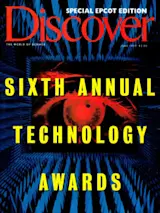Last July’s reckless tryst between Jupiter and comet Shoemaker- Levy recalled the exciting violence of the early solar system, the old days when sparks flew from worlds in collision.
Jupiter, the most intricately detailed planet, hardly needed outside help to be a fascinating object. But the pummeling by airport-size comet chunks created a riveting witches’ brew of dusty debris and dredged- up ammonia from the Jovian clouds. The ensuing black patches looked like missing pixels caused by some computer glitch.
Those ominous impact blemishes would have kept amateur and professional astronomers glued to their instruments all winter, but they were relegated to other obsessions when the giant planet slid behind the sun to be lost for months in the solar glare. Now it’s back. This month Jupiter reaches opposition--when it’s closest to Earth and out all night. No question: May through July offers the best opportunity in 1995 for examining ...














